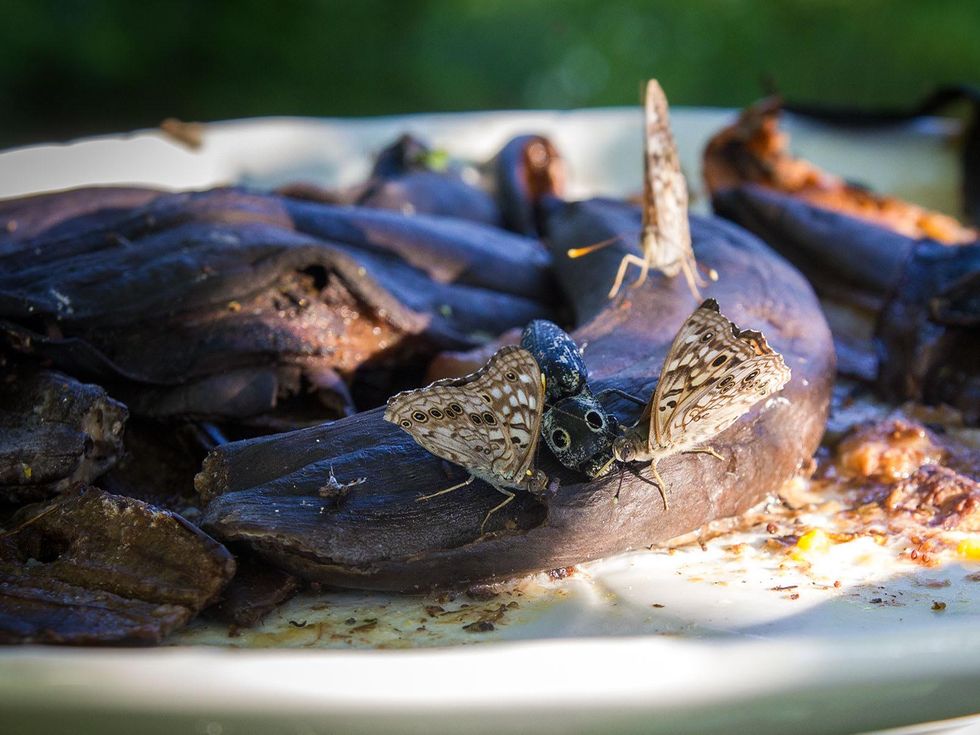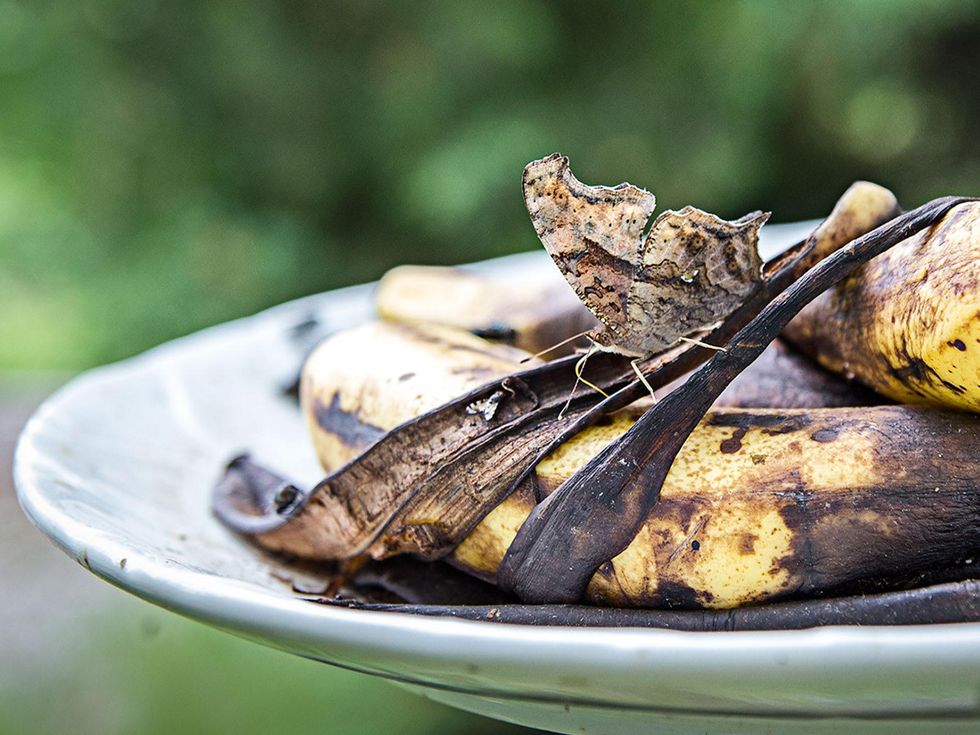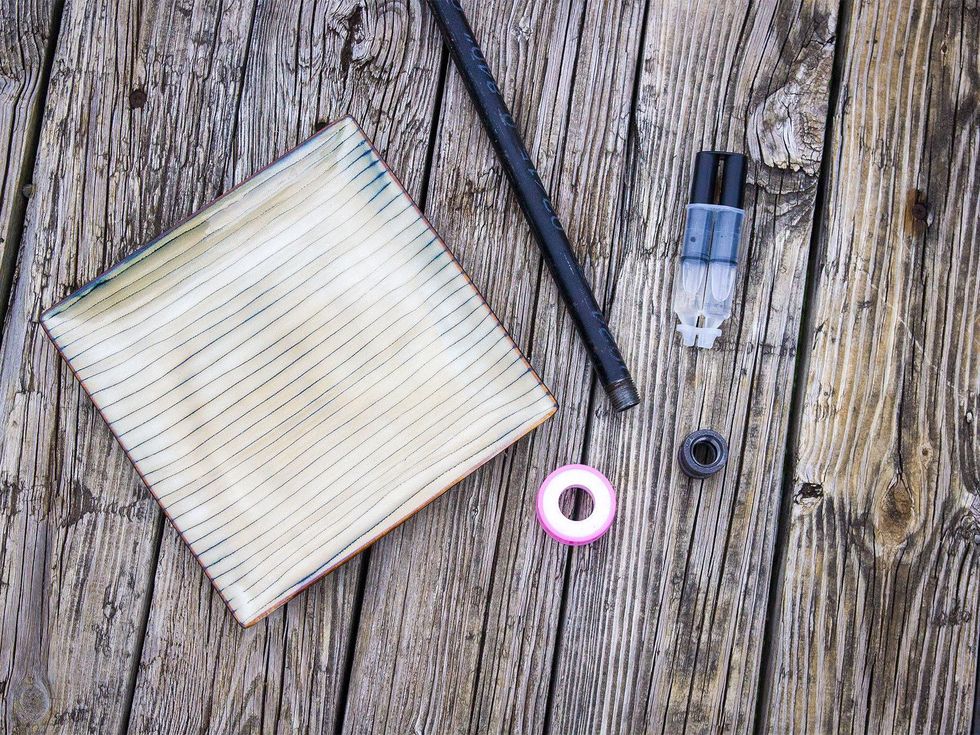The Farmer Diaries
Texas farmer attracts beautiful creatures to his garden with simple project
The most recent addition to my garden is a butterfly feeding station. I built it last month, and two days after I set it up and stocked it with food, unusual butterflies found it and began gorging themselves.
It was a simple project, taking only half a day to buy all the parts and assemble them, and even to let the epoxy dry. Essentially, it's a plate on a pole, inspired by the plates of fruit set out for the moths and butterflies at the butterfly house at the Texas Discovery Gardens in Fair Park.
The design
After seeing how the butterflies at the butterfly house were fed, my wife, Allee, wanted to see if the butterflies in our area might be attracted to such a feeder in our garden. Because she knew that two of our five cats think butterflies are an irresistible snack, she thought that it would have to be up off the ground and inaccessible to our furry family as well any critters who might steal away the food.
My addition to the design idea was to make the plate firmly in place when it was set up but easily removed for cleaning by simply unscrewing it from the pole.
The parts
To get the job done, I only needed a plate, a 10-foot threaded black iron pipe and a threaded black iron coupling fitting, all half-inch in diameter. The extra large serving plate came from a discount store; the pipe, coupling fitting and quick-dry epoxy came from the home improvement center next to it.
Making the feeder
To the bottom of the plate, dead in the center, I glued the threaded black iron coupling fitting, which allows the plate to be screwed onto the pole. I then hammered the steel pipe into the ground by about two and a half feet so that more than seven feet of it stood high above the ground and out of the reach of my cats. I applied plumbers tape to the threads at the top of the pipe to keep the coupling from welding to the pipe when it rusts.
When the epoxy on the plate dried, I gave it all a cleaning and screwed it onto the pipe. The epoxy held tight, and I completed one of the simplest projects I've ever undertaken.
The food
I set banana peels and chunks of pineapple on the plate to start. I only use organically grown fruit because anything else could be contaminated with neonicotinoids, a new class of insecticides that infuse every cell of a plant, making its leaves, fruit, pollen and even its nectar into a death blow for insects. Neonics can't be washed off; they become the plant.
Later, I added the tops that I cut off from organically grown strawberries, as well as slices of peaches and apples. By far, the banana peel has been the biggest hit, attracting several species of butterflies and other insects in just two days. The apple slices are also popular, followed by the peach slices. No one likes the strawberry tops yet.
Who came to dinner
The first to find the feeder were several Red Admiral butterflies. Brown and black with orange circular pattern, these butterflies eat rotting fruit when they're not gathering nectar. They're not an uncommon butterfly by any means, but I'd never had the chance to see one as close as when I found them on the feeder.
The Red Admirals were followed by Question Marks, a species of butterfly noted for its ragged and angled wings punctuated with what looks like a question mark. They're brown and can easily pass for tree bark when they're still.
Leafwings showed up soon afterward, named such because their closed wings resemble dead leaves. Leafwings eat only decaying vegetation, making the feeder a sure draw for these butterflies not especially known for frequenting gardens.
Then came the Tawny Emperors and Hackberry Emperors, both of which are found wherever hackberry trees grow because that's what their caterpillars eat. These butterflies are known for their friendliness, showing no fear and readily landing on anyone who's near, because in addition to eating fruit, they need salt.
By the first of May, we noticed Red-spotted Purples at the feeder. With their brilliantly blue wings and red spots, they look like Pipevine Swallowtails. They're not nectar feeders, so to lure one to a garden takes more than planting flowers.
Several other insects came to feast too, including a click beetle which really did click and seemed to play dead when I picked him up. There have also been a few wasps, which are minor pollinators and major caterpillar eaters.
I feel gratification that so many butterflies have taken to my feeder as quickly as they have. I also enjoy seeing butterflies that I never knew existed. Once the melons I grow start to put on fruit this year, I'll inevitably have defects that I can't sell or eat myself. I now have a place to put slices of these rejects so they can benefit native butterflies and moths.
This is part of how my view farming is evolving. It started with just an attempt to grow my own food, organically and safely. But now, my farming venture is becoming a drive to create a place that's hospitable to everything: birds; bees; butterflies; insects of all kinds; and whatever possum, skunk or frog wants to take up residence with us.
Some of the butterflies attracted to my new feeder will pollinate crops also, but there are some that do not. That's fine with me because not everything has to have some immediate value as a so-called beneficial organism for me to appreciate it. In view of the whole web of life, everything has its place and in some way contributes to a healthy ecosystem — and therefore a thriving farm.
By boosting biodiversity in the garden and among my field crops, I've been rewarded by increased productivity; it's also given me more to enjoy as new creatures emerge from the margins and come within view.





